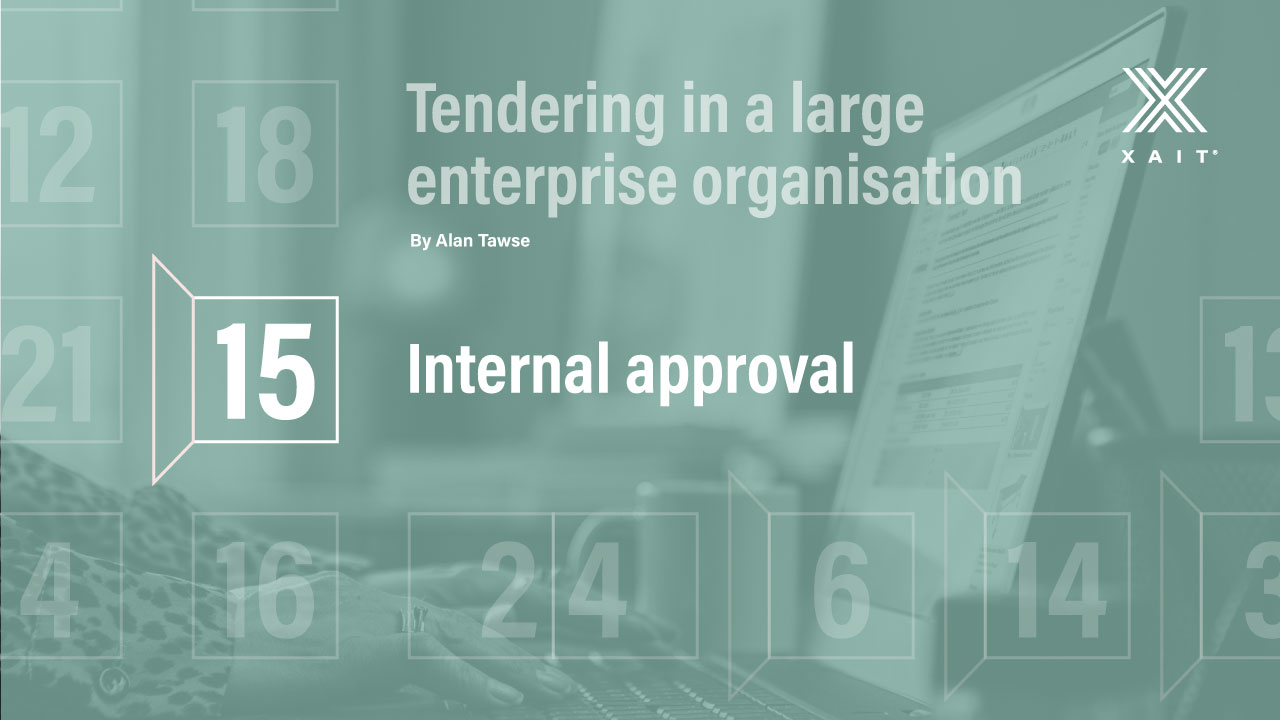
Internal approval
14.12.2020
-2 min

Software
LET'S TALK!
We offer software that makes you win big and ultimately gives you the work-life balance you deserve.

XaitPorter
Co-authoring and automation solution for complex documents

XaitCPQ
Quickly and accurately price combinations of interdependent products and services
XaitProposal
Guided proposal creation for comprehensive, winning proposals
XaitRFI
The smarter way to respond to RFIs, DDQs and security questionnaires
XaitWebProposal
The easiest way to create interactive and custom mini-websites

XaitAI
The X factor for analyzing and writing winning bids and proposals
Industry
OUR SOLUTIONS BY INDUSTRY
Do you have a question about your business vertical?
Resources
RESOURCES
Discover all our Xaiting resources!
About us
LET'S TALK
We can challenge mindsets and make significant changes to the way people interact

Alan Tawse
14.12.2020
-2 min

An enterprise will normally have an internal approval process to be completed before the bid is submitted to the client. This is to ensure that their own management is aware of any business risk and the commitments they are making, should they be awarded the tendered work.
The degree of complexity of this process will vary from enterprise to enterprise, but it is something that will take place whilst the tender submission is being prepared and is likely to involve some of the persons working on the response material.
It is important to have visibility of this parallel process and an understanding of where there is an intersection with people and their work on the tender, so that it can be built into the time plan.
Regardless of the actual mechanism, any approval process will likely require the tender team to prepare a summary of the opportunity for management to review. This will contain a number of key elements, such as:
The information will need to be reviewed by the relevant management, with participants determined by the scope of the services being provided and the value of the tender.
The overall time required for approval is a compilation of a number of different elements, such as:
*A key factor in the process is whether all of the relevant management are engaged at the same time, or whether approval is a step-by-step process, moving through the management structure in successive levels.
In general, the size and complexity of the tender is likely to affect the number of people involved and the time that the process will take, so that needs to be understood to allow sufficient time in the overall tender preparation plan.

Alan Tawse
Alan has worked in the oil and gas industry since 1974 in various administrative, operational and managerial roles in the UK, Netherlands and Norway. In 1993 he joined Halliburton in Norway as country manager of their new Drilling Systems division. Following a merger with Dresser industries in 1998, he moved to Business Development where he established a BD support team providing centralised expertise for tendering, contract management, market intelligence and various BD software systems. After managing up to 200 tenders and proposals annually for over 20 years, Alan retired at the beginning of 2020 with plans to explore Norway, and spend time with family overseas, He enjoys downhill skiing in the winter, golfing in the summer and following the Formula 1 racing season throughout the year.

